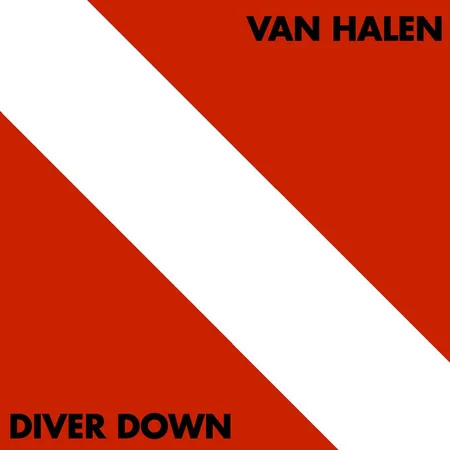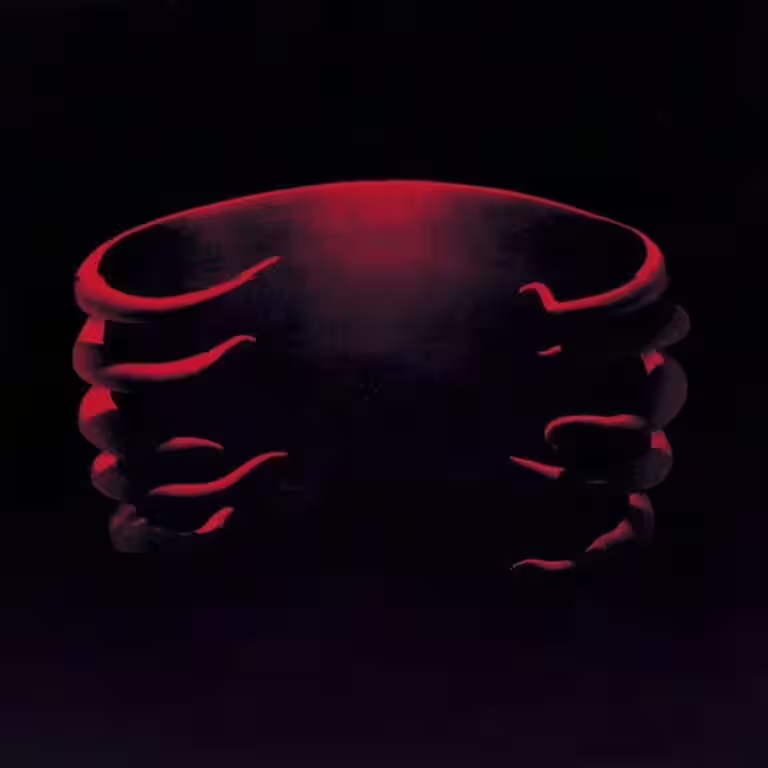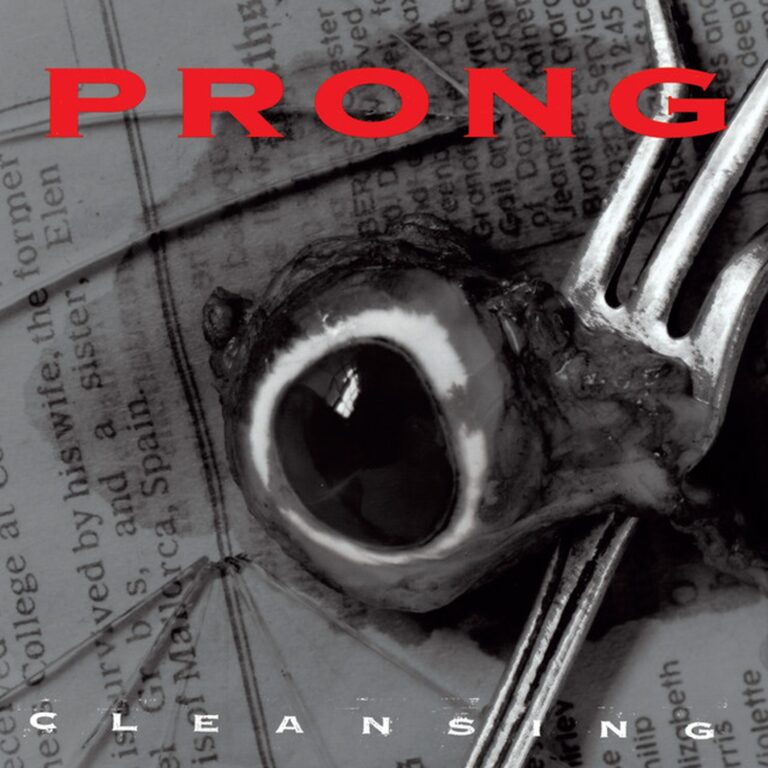
Van Halen’s Diver Down: The Making of a Maverick Rock Album
Some albums are born from years of planning, but others burst into existence almost by accident. Diver Down, released by Van Halen on 14 April 1982, sits squarely in the latter camp. Its creation was fast, its style eclectic, and its legacy—still debated over forty years later—remains undiminished. With five covers among its twelve tracks and a runtime just over thirty minutes, it’s a record that both delighted and divided fans. As we journey through its origins, recording, songs, and influence, you’ll discover why Diver Down is so much more than a stopgap in Van Halen’s discography. This article will cover the story behind the album, the people who made it, the songs themselves, its commercial and critical reception, and the impact it left on music. By the end, you’ll know every detail that shaped this controversial and creative milestone.
| Attribute | Details |
|---|---|
| Release date | 14 April 1982 |
| Album title | Diver Down |
| Genre | Hard rock, heavy metal, power pop |
| Total runtime | 31:04 |
| Number of tracks | 12 |
| Record label | Warner Bros. Records |
| Recording studio | Sunset Sound Recorders (Los Angeles), Amigo Studios (North Hollywood) |
| Producer(s) | Ted Templeman, Van Halen |
Upon release, Diver Down raced up the charts, reaching number three on the US Billboard 200 and selling four million copies in the United States alone. Its impact was immediate, keeping Van Halen in the public eye after the darker Fair Warning (1981). The record’s fast creation and heavy use of cover songs led to divided opinions, but its unique energy, inventive guitar work, and playful spirit have helped it endure. In the words of Eddie Van Halen, “We did it in twelve days for forty-six grand. That’s the fastest, cheapest record we ever made” (quoted in Ted Templeman’s memoir, 2020). David Lee Roth explained the album’s cover art, saying, “It means there’s something going on that’s not apparent to your eyes. You have to dig a little deeper.” For fans and critics alike, Diver Down remains a testament to the band’s ability to thrive under pressure and turn chaos into creativity.
Next, we’ll explore the circumstances that led to the making of Diver Down, revealing how Van Halen’s fifth album came together in a whirlwind of covers, classics, and last-minute inspiration.
The Genesis of “Diver Down”
By late 1981, Van Halen were at a crossroads. Their previous album, Fair Warning, had taken a darker, more experimental turn, and although it sold well, the label wanted a more accessible follow-up. The band’s management and Warner Bros. Records urged them to release something quickly to keep their momentum going. In fact, the project began almost by accident. David Lee Roth suggested recording a single, “Dancing in the Street,” but Eddie Van Halen preferred Roy Orbison’s “(Oh) Pretty Woman.” The band recorded it in one day, and when it became a hit, the label insisted on a full album to capitalise on its success.
As a result, the album was conceived and completed at breakneck speed. The band turned to their past for inspiration, dusting off old demos and live favourites. Several original tracks on Diver Down—such as “Hang ’Em High” and “The Full Bug”—were reworked from earlier material. Meanwhile, the album’s five cover songs paid homage to the band’s love of 1960s pop and R&B, reimagined with Van Halen’s trademark flair. Eddie Van Halen’s guitar wizardry, Michael Anthony’s harmonies, Alex Van Halen’s thunderous drumming, and Roth’s showmanship all played vital roles in shaping the record’s sound.
The core band line-up remained unchanged, but there was a special guest appearance from Jan Van Halen, Eddie and Alex’s father, who played clarinet on “Big Bad Bill (Is Sweet William Now).” The album’s rapid production was partly a result of financial constraints. The label financed the sessions, with a total budget of around $46,000—a fraction of what some bands spent on a single track. Despite the tight budget and time pressure, the group delivered a record that was both playful and polished.
The title and artwork were equally striking. The cover features the international “diver down” flag—a red field with a white diagonal stripe—used to signal divers below the surface. Roth explained, “It means there’s something going on underneath that’s not apparent to your eyes.” Manager Noel Monk added that there was a cheeky double meaning, hinting at a sexual innuendo. The minimalist design, inspired by Joy Division’s album sleeves, stood out among the era’s often elaborate covers. The back featured a live photo from Van Halen’s 1981 show at the Tangerine Bowl, Orlando, opening for The Rolling Stones.
Here’s a look at the musicians who brought Diver Down to life:
| Band Member | Instrument(s) / Role(s) |
|---|---|
| David Lee Roth | Lead vocals, synthesizer (“Intruder”), acoustic guitar and harmonica (“The Full Bug”) |
| Eddie Van Halen | Electric and acoustic guitars, backing vocals, synthesizer (“Dancing in the Street”) |
| Michael Anthony | Bass guitar, backing vocals |
| Alex Van Halen | Drums, backing vocals (“Happy Trails”) |
| Jan Van Halen | Clarinet (“Big Bad Bill (Is Sweet William Now)”) |
In summary, Diver Down was born from necessity and opportunity. Its blend of covers, instrumentals, and revamped originals reflected both creative resourcefulness and a willingness to have fun. As Eddie Van Halen later admitted, “It was a lot of covers, but it kept us out there.” Next, we’ll go inside the studio and uncover how the band managed to make a classic in just twelve days.
Recording Process
Studio magic can be unpredictable, but for Diver Down, it was a case of speed and spontaneity. The sessions took place at Sunset Sound Recorders in Los Angeles and Amigo Studios in North Hollywood, between January and March 1982. The band completed the entire album in just twelve days—a remarkable feat even by the standards of the early 1980s. Ted Templeman, who had produced all of Van Halen’s previous records, returned to oversee the project alongside the band themselves.
Ted Templeman’s experience was invaluable. Known for his work with the Doobie Brothers and Little Feat, Templeman had a reputation for capturing raw energy without sacrificing clarity. Engineer Donn Landee was also on hand, bringing technical know-how and familiarity with the band’s sound. Together, they created an environment where ideas could be tried, tweaked, and committed to tape with minimal fuss. The pressure to work quickly meant there was little time for second-guessing. For instance, the instrumental “Cathedral” was recorded in one take, and “(Oh) Pretty Woman” was completed in a single day.
Equipment played a crucial role. Eddie Van Halen used his iconic Frankenstrat guitar, and on “Little Guitars,” he played a miniature Les Paul crafted by luthier David Petschulat. For “Where Have All the Good Times Gone!,” he ran his guitar through an Echoplex, creating a swirling, almost organ-like effect. The band recorded using what was available at Sunset Sound, which at the time likely included Neumann and Shure microphones, an API or Neve mixing desk, UREI compressors, and Ampex tape machines. The studio’s large live room contributed to the record’s open, punchy sound. While exact details of every piece of gear are not documented, these choices were typical for Sunset Sound in the early 1980s.
| Studio Hardware / Gear | Likely Used On Diver Down |
|---|---|
| Guitars | Frankenstrat, Mini Les Paul (David Petschulat), Ibanez Destroyer (possibly) |
| Amplifiers | Marshall Plexi, custom mods, Celestion speakers (likely G12-65s or Greenbacks) |
| Effects | Echoplex, MXR Phase 90, Flanger, Harmonizer/Detune (on later tracks) |
| Microphones | Neumann U87, Shure SM57, AKG C414 (assumed based on Sunset Sound’s inventory) |
| Mixing desk | API or Neve console (standard at Sunset Sound in 1982) |
| Tape machines | Ampex 24-track |
| Other | UREI 1176 compressors, EMT plate reverb, studio grand piano |
The process was not without its quirks. The video for “(Oh) Pretty Woman” was banned by MTV for controversial content, only to become a cult favourite later. The band’s willingness to experiment is clear throughout the album, from the flamenco-inspired intro of “Little Guitars” to the playful a cappella of “Happy Trails.” Ted Templeman later reflected, “We were just trying to keep things moving. The band had a chemistry that worked best when they didn’t overthink.”
Ted Templeman’s influence as producer is evident across many classic albums. Here’s a selection of his other notable productions:
| Producer | Artist | Album | Year |
|---|---|---|---|
| Ted Templeman | The Doobie Brothers | Toulouse Street | 1972 |
| Ted Templeman | The Doobie Brothers | The Captain and Me | 1973 |
| Ted Templeman | Van Halen | Van Halen | 1978 |
| Ted Templeman | Van Halen | Van Halen II | 1979 |
| Ted Templeman | Van Halen | Women and Children First | 1980 |
| Ted Templeman | Van Halen | Fair Warning | 1981 |
| Ted Templeman | Van Halen | 1984 | 1984 |
| Ted Templeman | Sammy Hagar | Standing Hampton | 1981 |
| Ted Templeman | Little Feat | Dixie Chicken | 1973 |
Next, we’ll see how Diver Down fared once it left the studio and entered the charts.
Commercial Performance and Reception
When Diver Down hit the shelves in April 1982, it made an immediate impression. The album peaked at number three on the US Billboard 200 and spent sixty-five weeks on the chart. It sold four million copies in the United States by 1998, earning a 4× Platinum certification from the RIAA. In Canada, it went Platinum, with over 100,000 units sold. Elsewhere, it reached number five in Canada, number nine in France, and broke into the top forty in the UK, Japan, and several other countries. Its commercial performance outpaced Fair Warning and helped re-establish Van Halen as one of the most bankable rock acts of the early 1980s.
To put its success in context, here’s a table of Van Halen’s studio albums, with sales data where available:
| Album | Year | Sales Data |
|---|---|---|
| Van Halen | 1978 | 10 million (US) |
| Van Halen II | 1979 | 5 million (US) |
| Women and Children First | 1980 | 3 million (US) |
| Fair Warning | 1981 | 2 million (US) |
| Diver Down | 1982 | 4 million (US) |
| 1984 | 1984 | 10 million (US) |
| 5150 | 1986 | 6 million (US) |
| OU812 | 1988 | 4 million (US) |
| For Unlawful Carnal Knowledge | 1991 | 3 million (US) |
| Balance | 1995 | 3 million (US) |
| Van Halen III | 1998 | 500,000 (US) |
| A Different Kind of Truth | 2012 | 411,000 (US) |
Diver Down may not have matched the astronomical sales of 1984 or Van Halen, but it easily outperformed Fair Warning and several later records. It also earned a place in Guitar World’s “25 greatest rock guitar albums of 1982” and continues to appear in best-of lists, including Ultimate Classic Rock’s ranking of Van Halen albums.
In 1982, the rock and metal world was especially vibrant. Other albums released that year by similar artists included:
- The Number of the Beast by Iron Maiden [physical sales: unknown]
- Screaming for Vengeance by Judas Priest [physical sales: unknown]
- Creatures of the Night by Kiss [physical sales: unknown]
- Blackout by Scorpions [physical sales: unknown]
- Under the Blade by Twisted Sister [physical sales: unknown]
- Restless and Wild by Accept [physical sales: unknown]
- Iron Fist by Motörhead [physical sales: unknown]
Diver Down received RIAA 4× Platinum certification in the US and Platinum in Canada. It remains a staple in Van Halen’s catalogue, both commercially and in terms of influence.
1982 was also a year of seismic events in heavy music. Iron Maiden’s The Number of the Beast introduced Bruce Dickinson and topped the UK charts. Judas Priest released “You’ve Got Another Thing Comin’,” their biggest single. Metallica relocated to the San Francisco Bay Area, while Ozzy Osbourne’s guitarist Randy Rhoads tragically died in a plane crash. Meanwhile, bands like Dio, W.A.S.P., and Destruction formed, setting the stage for the next wave of metal. The “Second British Invasion” brought synth and new wave acts to the US charts, and Michael Jackson’s Thriller was released, changing pop music forever. In short, Diver Down arrived at a time of both innovation and upheaval.
Track Analysis
Diver Down produced several memorable singles and deep cuts. The three singles—“(Oh) Pretty Woman,” “Dancing in the Street,” and “Secrets”—each showed a different side of Van Halen. “(Oh) Pretty Woman” was released on 18 January 1982 and quickly became a hit. “Dancing in the Street” followed in May, while “Secrets” arrived in August. All three featured the band’s knack for reimagining classics in their own image. The album also includes originals like “Hang ’Em High” and “The Full Bug,” as well as playful instrumentals and an a cappella closer.
Here’s a detailed table of every song on the album, including writing credits and which were singles:
| Track Name | Length | Writing Credit |
|---|---|---|
| Where Have All the Good Times Gone!* | 3:02 | Ray Davies (The Kinks cover) |
| Hang ‘Em High | 3:28 | E. Van Halen, A. Van Halen, M. Anthony, D.L. Roth |
| Cathedral | 1:23 | E. Van Halen |
| Secrets* | 3:28 | E. Van Halen, A. Van Halen, M. Anthony, D.L. Roth |
| Intruder | 1:39 | E. Van Halen, A. Van Halen, M. Anthony, D.L. Roth |
| (Oh) Pretty Woman* | 2:53 | Roy Orbison, William Dees (Roy Orbison cover) |
| Dancing in the Street* | 3:43 | Marvin Gaye, Ivy Hunter, William Stevenson (Martha and the Vandellas cover) |
| Little Guitars (Intro) | 0:42 | E. Van Halen |
| Little Guitars | 3:47 | E. Van Halen, A. Van Halen, M. Anthony, D.L. Roth |
| Big Bad Bill (Is Sweet William Now) | 2:44 | Milton Ager, Jack Yellen (Margaret Young cover) |
| The Full Bug | 3:18 | E. Van Halen, A. Van Halen, M. Anthony, D.L. Roth |
| Happy Trails | 1:03 | Dale Evans (Dale Evans cover) |
Note: Tracks marked with * were released as singles. “(Oh) Pretty Woman” reached number 12 on the US Billboard Hot 100, while “Dancing in the Street” and “Secrets” were both successful on rock radio, though specific chart data is limited. “Where Have All the Good Times Gone!” was not released as a single but became a fan favourite.
Song Meaning and Lyrics
The lyrics on Diver Down swing between playful nostalgia, romance, and outright fun. The singles in particular showcase Van Halen’s knack for reinterpreting well-known songs and injecting them with new life. “(Oh) Pretty Woman” is a straight-up tribute to Roy Orbison’s original, focusing on the universal theme of admiring an attractive woman (“Pretty woman, walking down the street…”). According to fan analysis on VHLinks.com, the song is about the narrator’s longing for a beautiful woman he sees, with a sense of both hope and resignation.
“Dancing in the Street,” originally by Martha and the Vandellas, becomes a call for global celebration. The lyrics invite everyone to “dance in the street,” making it a universal party anthem. “Where Have All the Good Times Gone!” (a Kinks cover) is tinged with nostalgia, asking why things seem less carefree than before. Fans interpret it as a lament for lost innocence and a wish to recapture youthful joy. “Little Guitars” tells the story of a man infatuated with a mysterious woman—its lyrics are full of longing and romantic pursuit, with lines like “You’re exactly what the doctor ordered” and “When I see you, all your little guitars sing to me.” (Lyric Analysis)
“Secrets,” one of the band’s most subtle ballads, is about a woman who refuses to wait for life to happen, instead chasing adventure and excitement (“She ain’t waiting till she gets older, her feet are making tracks in the winter snows…”). The lyrics have been praised for their vivid imagery and sense of freedom. Each song’s writing credits reflect the band’s collaborative approach, with covers chosen for their personal significance and originals shaped by the whole group.
Touring and Promotion of Diver Down
Promotion for Diver Down was as energetic as the album itself. Van Halen supported the record with the “Hide Your Sheep” tour, playing over one hundred shows across North America and Europe. The tour kicked off in June 1982, with rehearsals taking place at Zoetrope Studios in Pasadena. The setlist mixed new tracks with classics from earlier albums, and the band’s reputation for wild, unpredictable performances drew huge crowds. Notable shows included sold-out nights at the Los Angeles Forum and a headline slot at the US Festival.
The band’s touring partners in 1982 included acts like After the Fire and The Fools, who opened selected dates. During the tour, Van Halen’s live antics became legendary—David Lee Roth’s stage banter, Eddie’s extended guitar solos, and the group’s tight musicianship made each concert an event. The tour also featured elaborate stage sets and lighting, with the “diver down” flag motif appearing throughout. One rehearsal recording from June 27, 1982, captures the band running through songs such as “Romeo Delight,” “Unchained,” “Hang ’Em High,” and “The Full Bug,” giving fans a behind-the-scenes glimpse of their preparation (VHBoots.com).
Influences and Legacy
“Diver Down” is shaped by a range of influences, from British Invasion pop to American R&B, flamenco, and jazz. The band’s love for The Kinks, Roy Orbison, and Martha and the Vandellas is obvious in their choice of covers. Eddie Van Halen’s admiration for classical guitar and flamenco, especially Carlos Montoya, inspired the intricate intro to “Little Guitars.” The album’s willingness to blend genres—adding clarinet, harmonica, and a cappella—set it apart from the heavier records of the time.
Its legacy is equally broad. Many bands, from hard rock to alternative, cite Diver Down as an example of how to balance experimentation with mainstream appeal. The album’s lighter, more playful approach paved the way for later genre-blending acts. In particular, Eddie’s guitar effects on “Cathedral” and “Where Have All the Good Times Gone!” influenced a generation of guitarists who sought new sounds beyond standard rock riffs. The album is often credited with keeping Van Halen in the spotlight between their heavier releases and their pop breakthrough with 1984.
Here’s a summary of the key influences and those who followed in Diver Down’s wake:
| Influences on “Diver Down” | Artists Influenced by “Diver Down” |
|---|---|
| The Kinks, Roy Orbison, Martha and the Vandellas, Carlos Montoya, Joy Division (artwork), jazz, flamenco | Extreme, Mr. Big, Red Hot Chili Peppers, Foo Fighters, The Darkness |
1982 was a year of cultural and global upheaval. The Falklands War dominated headlines in the UK, while Channel 4 launched on British television. Michael Jackson’s Thriller changed the face of pop, and films like E.T. and Blade Runner premiered. In music, the “Second British Invasion” brought new wave and synth-pop to the charts, while heavy metal continued to evolve with bands like Iron Maiden and Judas Priest. In the US, the first US Festival drew over 300,000 people. Diver Down arrived in the middle of this creative storm, reflecting both the uncertainty and the excitement of its era.
Five Things About Diver Down
Let’s highlight five fascinating facts about the album, all verified from credible sources:
| Fact | Details |
|---|---|
| Fastest Van Halen album | Recorded in just 12 days at a cost of $46,000 (Source: Ted Templeman memoir, 2020) |
| Five cover songs | Nearly half the album consists of covers, more than any other Van Halen studio album (Source: Wikipedia, AllMusic) |
| Jan Van Halen’s guest spot | Eddie and Alex’s father played clarinet on “Big Bad Bill (Is Sweet William Now)” (Source: Wikipedia) |
| MTV banned the video | The “(Oh) Pretty Woman” video was one of the first banned by MTV for its controversial content (Source: Wikipedia) |
| Minimalist cover art | The diver down flag design was inspired by Joy Division and symbolised hidden depth (Source: David Lee Roth interview, Wikipedia) |
Media and Television Usage
Despite its popularity, I was unable to find any uses of songs from Diver Down in major films, TV shows, or adverts according to Tunefind. While Van Halen’s other hits are often licensed for soundtracks and games, the tracks from this album remain largely absent from mainstream media placements.
Critical Reviews and Retrospectives
Critical reaction to Diver Down was mixed at the time of release. Some praised its energy and sense of fun, while others criticised the heavy reliance on covers. Don Waller (Los Angeles Times) called it “a fun record, full of invention and irreverence.” Bart Becker (Lincoln Journal Star) enjoyed the band’s humour and rock prowess. In contrast, Parke Puterbaugh (Rolling Stone) and Robin Smith (Record Mirror) felt the album lacked cohesion and original material. Sandy Robertson (Sounds) noted the filler content, suggesting it might have worked better as a shorter EP. Nevertheless, the production and musicianship were widely praised.
Retrospective reviews have been more positive. Stephen Thomas Erlewine (AllMusic) described it as “one of Van Halen’s best records, full of joy and personality.” The Rolling Stone Album Guide (2004) said it marked a return to form, with some of the band’s best covers. Some critics, such as Colin Larkin (Encyclopedia of Popular Music), still consider it the weakest Van Halen album, but many fans appreciate its summery feel and inventive guitar work. The album is now ranked highly among rock guitar albums of 1982 and remains a favourite for its experimental spirit.
After Diver Down
Following Diver Down, Van Halen quickly moved on to record their next album, 1984. This record marked a major shift, introducing more synthesizers and yielding the band’s only US number one single, “Jump.” The success of 1984 set the stage for David Lee Roth’s departure and the arrival of Sammy Hagar. The band’s popularity continued through the 1980s and 1990s, with multi-platinum albums and stadium tours. As of 2025, Van Halen are no longer active following Eddie Van Halen’s death in 2020, but their influence remains strong. Alex Van Halen has discussed releasing unreleased material as a tribute to Eddie, and the band’s legacy is still celebrated by fans worldwide.
Remasters and Reissues
There is no verified information available about official remasters or reissues of Diver Down since its original release. If any are announced or released in the future, this section will be updated to reflect the details.
Conclusion
Diver Down remains a unique entry in Van Halen’s catalogue. Born out of urgency, shaped by playful experimentation, and packed with both covers and originals, it stands as a testament to the band’s creativity and resilience. Its influence stretches far beyond its short runtime, inspiring musicians across genres and generations. As the music world continues to change, Diver Down is a reminder that sometimes the best art comes from taking risks, embracing fun, and making the most of what you have. Van Halen may be gone, but their music—and their sense of adventure—live on.
Further Reading
For more on Van Halen and the era, see our own related articles and podcasts:
- Van Halen’s 1984: A Rock Revolution (blog article)
External links:
Let us know in the comments what your thoughts are on Diver Down by Van Halen. Did we miss anything? Share your experiences and join the conversation!



